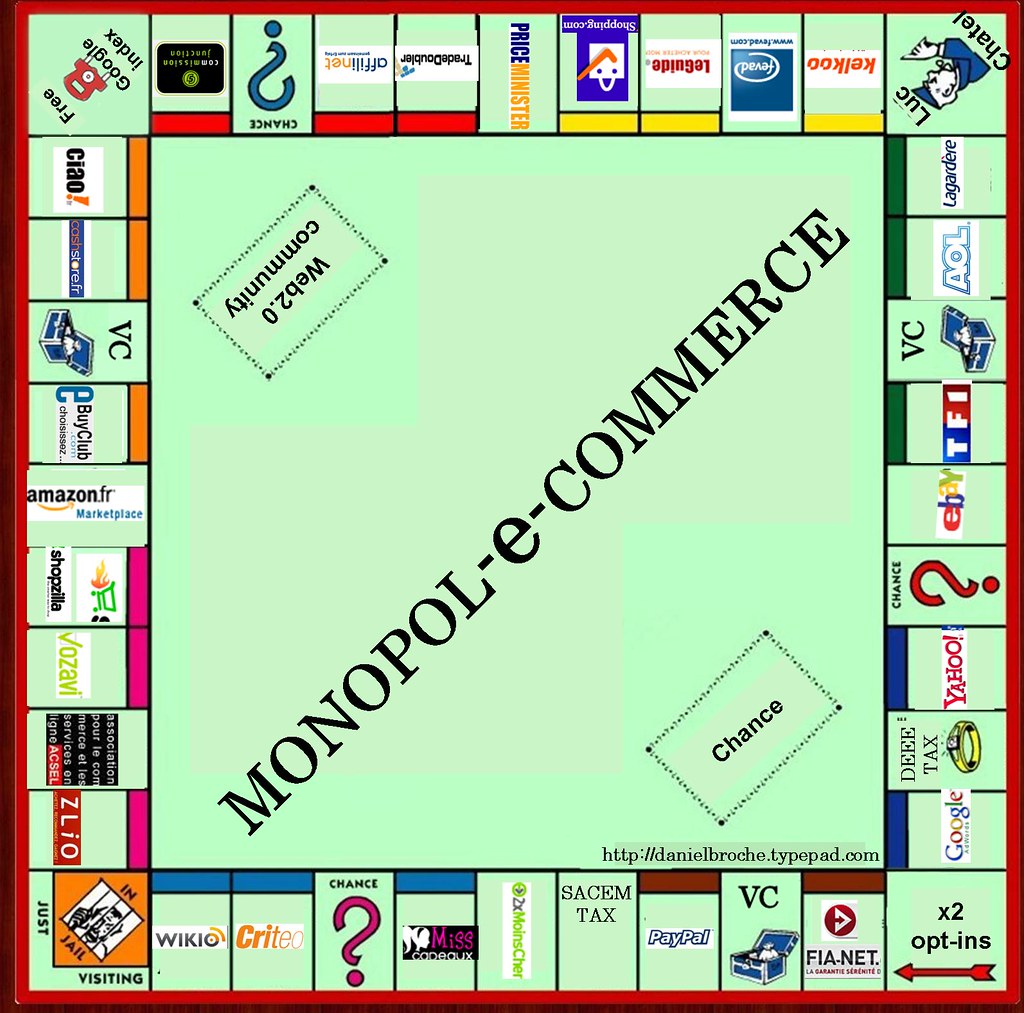Why Selling Digital Products is a Great Business Opportunity
If you’re looking for a profitable business opportunity, selling digital products could be the way to go. With low overhead costs and high profit margins, selling digital products has become an increasingly popular option for entrepreneurs. In fact, according to mailerlite.com, the digital products market is expected to reach $331 billion by 2027. Here are some reasons why selling digital products can be a great business opportunity:
1. Low Overhead Costs
Unlike physical products, digital products don’t require inventory, shipping, or storage costs. This means that the initial costs of creating and selling digital products are much lower than traditional businesses.
2. High Profit Margins
Because digital products can be sold repeatedly without the need for replenishing inventory, the profit margins are much higher compared to traditional businesses.
3. Potential for Automation
Digital products can be automated, meaning that once the product is created, it can be sold repeatedly without any extra effort on the seller’s part.
4. Flexible Products
Digital products can be created in a wide range of niches and industries, giving sellers the flexibility to create products that are unique to their interests and expertise.
Whether you’re a blogger, artist, or software developer, there are digital products that can be created and sold in your industry. In the next section, we’ll explore the different types of digital products that are available.

What Kind of Digital Products to Sell?
Since there are so many different kinds of goods that can be sold, digital products have grown in popularity recently. The six best digital goods to sell online are listed below, according to Shopify.
- Education-related Products
- licenses to Use Digital Assets
- Membership Sites
- Tools and Templates for Digital Simulation
- Music or Art: Art
- Services
The first step is to 1. Education-related Products
Online courses, tutorials, and eBooks are just a few examples of educational goods that can be purchased. These products are well-liked because they give the customer value by educating them on a new skill or imparting insightful knowledge.
The second section is located below. licenses to Use Digital Assets
Others may use digital assets like pictures, videos, and music on their websites or in their own digital products. For photographers and artists looking to monetize their work, this is a fantastic choice. Digital assets are becoming more and more crucial in retirement planning as more people accumulate valuable online assets like cryptocurrency, social media accounts, and digital media, as was mentioned in Finance Strategists.
-
3. Membership Sites
Members who pay a monthly or yearly fee can access exclusive content on membership websites. Access to online communities, courses, or resources that are not accessible to the general public may be included in this. The advantages of membership sites include scalability, low startup costs, and wider market reach, as stated in Mailerlite.
The following is the 4. Tools and Templates for Digital Simulation
Businesses or individuals who require assistance with design or productivity may be able to sell digital templates and tools. Social media graphics, project management tools, and website templates are a few examples. Selling digital templates and tools is a great option for business owners who want to produce a product once and sell it repeatedly, as suggested by Shopify.
-
5. Music or Art: Art
Online, Musicians and artists can sell their work as digital goods. Music, artwork, and other creative content fall under this category. Selling digital music or art has advantages like scalability, low startup costs, and wider market reach, according to Mailerlite.
-
6. Services
By offering packages or bundles online, service-based businesses can sell their services as digital products. Examples include virtual assistant services, website development, and graphic design services. service-based businesses can boost their revenue by selling digital goods and packages, which can be a great addition to their existing service offerings, as suggested by Shopify.
Let’s look at how to come up with concepts for digital products now that we’ve looked at the various types of digital products that are available.

How to Create Ideas for Digital Products
The first step is to brainstorm ideas if you’re thinking about selling digital goods but are unsure of where to begin. Here are some methods for coming up with digital product ideas:
The first step is to 1. Find a Niche.
Start by choosing a niche or sector you’re interested in. Cooking, graphic design, and personal development are all possible examples. Once you’ve identified your niche, look over what products are already on the market and consider how you can develop a distinctive and worthwhile product.
The second section is located below. A Problem Can Be Solved
Consider typical issues that people in your niche or industry encounter and develop a solution. If you work in the fitness industry, for instance, you could develop a workout plan for those who are short on time.
-
3. Repurpose Existing Content.
Replace already-existing content. You could, for instance, convert your blog posts into an ebook or course if you blog.
The following is the 4. Ask Your Audience.
Ask your audience what kinds of digital goods they would be interested in. Social media, email, or surveys are all options for accomplishing this.
-
5. Research Trends
Create a product that capitalizes on current trends in your sector by researching them. You could create a digital guide on how to make your own face masks at home, for instance, if you work in the beauty industry and face masks are currently in demand.
Before spending time and money on digital products, it’s critical to validate your concepts. We’ll look at how to validate digital product ideas in the next section.
How to Validate Your Digital Product Ideas
Before investing time and money into creating a digital product, it’s important to validate your idea to ensure that it has the potential to be profitable. Here are some ways to validate your digital product ideas:
1. Conduct Market Research
Conduct market research to determine if there is a demand for your product. Look at what products are already available in your niche and identify any gaps in the market. Consider using tools such as Google Trends or social media analytics to see what topics are trending in your industry.
2. Create a Landing Page
Create a landing page for your product and test it with your target audience. Use tools such as Google Analytics or heat mapping software to track user behavior and see if there is interest in your product. You can also use the landing page to collect email addresses and build a list of potential customers.
3. Run a Pre-Sale
Run a pre-sale for your product to test the market and generate interest. This will also help you determine if there is demand for your product before investing time and money into creating it.
4. Use Crowdfunding
Consider using crowdfunding platforms such as Kickstarter or Indiegogo to validate your product idea and raise money. This will also help you build a community around your product and generate interest.
5. Test Your MVP
Create a minimum viable product (MVP) and test it with your target audience. This will help you gather feedback and make improvements before launching your product.
By validating your digital product idea, you can ensure that you’re investing your time and money into a product that has the potential to be profitable. In the next section, we’ll explore how to create and market your digital product.
How to Create and Market Your Digital Product
Once you’ve validated your digital product idea, it’s time to create and market your product. Here are some steps to follow:
1. Create Your Product
Create your digital product using tools such as Canva, Adobe Creative Suite, or WordPress. Depending on the type of product you’re creating, you may need to hire a freelancer or outsource the work.
2. Choose an E-commerce Platform
Choose an e-commerce platform to sell your digital product. Popular options include Shopify, WooCommerce, and Gumroad. These platforms make it easy to set up an online store, manage payments, and deliver digital products.
3. Price Your Product
Price your digital product based on the value it provides to your customers. Consider factors such as production costs, market demand, and competition. Test different price points to see what works best for your product.
4. Create a Sales Page
Create a sales page for your digital product that highlights its benefits and features. Use persuasive copy and high-quality images to make your product stand out. Consider offering a free trial or money-back guarantee to entice potential customers.
5. Market Your Product
Market your digital product using a combination of strategies such as social media marketing, email marketing, paid advertising, and content marketing. Use platforms such as Facebook, Instagram, and Twitter to reach your target audience and build a following.
6. Build an Email List
Build an email list of potential customers by offering a lead magnet such as a free ebook or course. Use email marketing to nurture your subscribers and promote your digital product.
7. Collaborate with Influencers
Collaborate with influencers in your niche to promote your digital product. Offer them a free product or commission on sales in exchange for promoting your product to their followers.
By following these steps, you can create and market your digital product effectively. Remember to continually test and optimize your strategies to ensure the best results.
Types of Digital Products to Sell
There are many types of digital products that you can sell online. Here are some of the most popular options:
1. Ebooks
Ebooks are a popular digital product that can be sold on platforms such as Amazon Kindle or through your own website. They can cover a wide range of topics such as fiction, self-help, or educational content.
2. Online Courses
Online courses are a great way to share your expertise and provide value to your audience. They can cover a wide range of topics such as business, marketing, or personal development. You can sell them on platforms such as Udemy or create your own course website using a platform such as Thinkific or Teachable.
3. Software Programs
Software programs can be sold as digital products and can range from productivity tools to graphic design software. They can be sold on platforms such as the Apple App Store or Google Play.
4. Digital Art
Digital art can be sold as prints or as digital files. It can include anything from illustrations to photography.
5. Music
Music can be sold as digital downloads or as a subscription service. Platforms such as iTunes and Spotify allow artists to sell their music online.
6. Stock Photos and Videos
Stock photos and videos are in high demand for businesses and content creators. They can be sold on platforms such as Shutterstock or Adobe Stock.
7. Templates and Themes
Templates and themes can be sold for a variety of purposes such as website design, email marketing, or social media. They can be sold on platforms such as Etsy or Creative Market.
8. Membership Sites
Membership sites provide exclusive content or services to paying members. They can include access to online communities, courses, or resources. Platforms such as Patreon or Memberful allow creators to monetize their content and build a community around their brand.
By considering these options and identifying what type of digital product suits your skills and expertise, you can begin to create a profitable online business.

Advice for Successful Sales of Digital Products
Compared to selling physical goods, selling digital goods requires a different strategy. The following advice will help you successfully sell digital goods:
The first step is to 1. Focus on Providing Value
Focus on giving your clients value through your digital products. Think about the problem your product addresses or the advantages it offers. To demonstrate the worth of your product, use case studies and customer testimonials.
The second section is located below. Make Your Sales Page More Powerful
Make sure your sales page is efficient at turning visitors into customers by optimizing it. To make your product stand out, use persuasive copy, high-quality pictures, and social proof. To optimize your page for conversions, think about using tools like A/B testing.
-
3. Pick the Appropriate Pricing Plan
Pick the appropriate pricing strategy for your digital product. Take into account elements like production costs, market demand, and competition. Test various price points to determine which suits your product the best.
The following is the 4. Use several Sales Channels.
To reach a larger audience, use multiple sales channels. Think about promoting your product on a variety of websites, including your own website, Amazon, or Etsy. To market your product and increase traffic to your sales page, use social media and email marketing.
-
5. Offer a Free trial or sample.
To draw in potential customers, offer a free trial or sample of your digital product. By doing so, you can raise your product’s value and foster trust. To lower the risk for potential clients, think about offering a money-back guarantee.
-
6. Provide Top-notch Customer Care
To make sure that your customers are satisfied with their purchases, offer top-notch client service. Respond to customer inquiries promptly and offer assistance as needed. For quick and effective customer service, think about using tools like live chat or a help desk.
-
7. Keep Improving Your Product
To keep your digital product relevant and valuable to your customers, keep improving it continuously. Get customer feedback and use it to make improvements. To keep customers interested, think about updating your product with fresh content or features.
You can increase your chances of successfully selling digital goods and starting a profitable online business by heeding these recommendations.

Are you prepared to sell your digital goods?
Selling digital goods can be a lucrative and rewarding business venture. You can choose the best digital products to sell and create and market them effectively by adhering to the instructions in this article.
Keep in mind to concentrate on giving your customers value, optimize your sales page, pick the best pricing strategy, use multiple sales channels, provide a free trial or sample, offer top-notch customer service, and continuously enhance your product.
Check out our other fantastic content on Good Money Site if you’re interested in learning more about selling digital goods and starting a profitable online business.
It’s time to begin your digital product journey now that you have the knowledge and resources. We wish you luck.
Questions
Who can sell digital products online?
Anyone can sell digital products online with the right tools and strategy.
What are the best digital products to sell?
The best digital products to sell include ebooks, online courses, software programs, digital art, music, and stock photos and videos.
How do I price my digital product?
Consider factors such as production costs, market demand, and competition when pricing your digital product. Test different price points to see what works best.
What if I don’t have a large audience to sell to?
Use multiple sales channels and marketing strategies to reach a wider audience. Consider collaborating with influencers or running social media ads.
How can I protect my digital product from piracy?
Use digital rights management tools or watermark your product to deter piracy. Consider offering exclusive content or bonuses for paying customers.
What if my digital product doesn’t sell?
Gather feedback from customers and make improvements to your product or marketing strategy. Consider offering a money-back guarantee to reduce the risk for potential customers.
